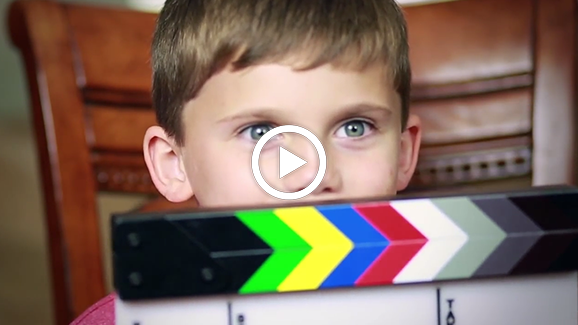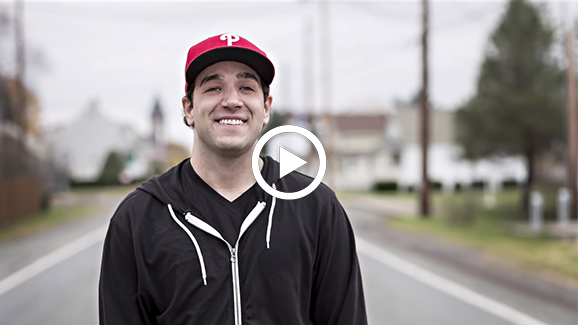
Development & Pre Production
Identify Your Goals
 Before you dive into the creative process of scripting, storyboarding, and casting your project, determine your specific marketing goals for each campaign. Who is your target audience? Are you looking to grow the number of fans on Facebook page, or is your call to action to get a patient to make an appointment through the online portal? Identifying your goals in advance will help inform interview questions, scripts, visuals needed, editing schedule and how many different versions of a concept you may need. For example, you may want to post a 30-second teaser on Facebook to promote your 2-minute cut on YouTube.
Before you dive into the creative process of scripting, storyboarding, and casting your project, determine your specific marketing goals for each campaign. Who is your target audience? Are you looking to grow the number of fans on Facebook page, or is your call to action to get a patient to make an appointment through the online portal? Identifying your goals in advance will help inform interview questions, scripts, visuals needed, editing schedule and how many different versions of a concept you may need. For example, you may want to post a 30-second teaser on Facebook to promote your 2-minute cut on YouTube.
Do You Need a Creative Partner or Production Company?
This all depends on your budget, internal resources, and skill level. I spoke with several internal marketing teams that enjoy producing content on their own or in house. But depending on the size of the campaign and the volume of content being produced, working with a creative agency and/or production company may increase the quality of your videos, add value, and maximize efficiency.
When looking for the right partner, think outside the box. While you want to work with an agency that understands hospital marketing, remember that is your specialty. Healthcare is more consumer driven than ever. Partner with a company that not only understands your brand, but one that knows how to get the attention of your target audience across multiple platforms and at different points of their healthcare journey.
Production
Time is Money—Stretch Your Dollar On Set
Hiring a production crew and renting equipment is expensive, but as I mentioned in Part One, try to plan ahead to shoot as many videos as you can while you have your crew. Knowing your content schedule ahead of time, and taking the time to storyboard each video (and version) will help you maximize your time on set, reduce the time you need with your talent, and stick to schedule. If you’re organized, one well planned 45-minute interview, could provide content for three videos.
Two Cameras
When shooting interviews, it is a good idea to have a two-camera setup. This gives you more options for angles (i.e. close up & medium shot) to cut to in the edit.
Schedule Time for B Roll
B roll is any footage that helps visually tell your story outside of the interview. It’s difficult to watch a talking head for three minutes straight. It’s also more challenging to edit if you have nothing to cut to.
Make sure that you shoot B roll that compliments your story, your subject and the feeling you are trying to convey.
Post-Production
Editing is Everything
Stories come to life in the edit room. Keep your videos concise and visually compelling. Every frame should tell a piece of your story – you don’t always need to spell it out with words.
Also, keep in mind shorter, well crafted videos do best on every social media platform. Learning to tell a beautiful & poignant story in 1- 3 minutes is a skill. Consider making a two part series if you have a longer story to tell.
Picture Lock First
Before you color correct your piece, sound edit or laydown your music, you want to complete, or picture lock, your visual edit for each version on your video. This will save you time, money and a lot of headaches moving forward.
Color Correction
You don’t have to go to an expensive studio to even out the color and light of your video. Most editing programs come with a simple color correction tool built in. Use it. It will make a world of difference visually.
Sound Mix and Music
A sound mix and music will also add tremendous production value to your spot. The sound of your video should feel natural and music should be an enhancement, not a distraction.
Final Outputs
Before you complete post production, make sure you output the proper technical elements you need. Remember, your videos will appear on all size screens.
3 Example Video Campaigns
I had the pleasure of speaking with three SHSMD members who have proven with a little blood, sweat (and maybe some tears), you can produce compelling stories and valuable messaging, even on a shoe string budget.
Take a look!
A Powerful Landing Page Video
Alexander Moore, Senior Manager of Corporate Marketing at Brooks Rehabilitation in Jacksonville, Florida, produces all of their video content in house. Alex believes story is the key. Check out Ryan Boyd’s Magical Recovery, featured on Brook’s landing page for the Center’s Brain Injury Department.

Show Off Your Team
When a local man was found frozen, and assumed dead, Lehigh Valley Health Network didn’t give up trying to save him. Wendy Kaiser, the hospital network’s Marketing Manager (and in house director) captured this truly amazing story and made it news worthy with over 27,000 views.

First Campaign, First Success
Check out Southern Illinois Health System video campaign for 2016 Stroke Awareness month. This was a zero budget experiment and very first video campaign for Digital Media Coordinator, Jennifer VanBrooker and Marketing Coordinator, Tracy Herron. Tracy shot the five-part series herself, on her souped-up iPhone.
The Goal:
- Educate the community.
- Get people to call 911.
It worked. With their clear objective in mind, the team spent only $20 promoting the campaign to their rural community on Facebook. A local nursing home and First Responder team shared the campaign. The videos reached over 15,000 people - exceeding their expectations.

By Brandi Savitt | November 22, 2016
SHSMD Digital Engagement Task Force Member
Managing Director & Creative Producer
The Storywell & Senza Pictures
brandi.savitt@thestorywellinc.com